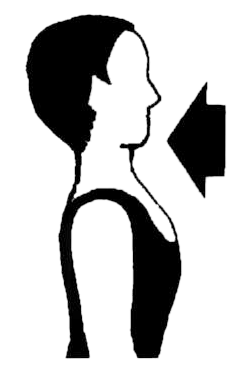These exercise videos have been developed to support people who have completed one of the Pain Management Programmes run by North Bristol NHS Trust and are intended for people who want to maintain or restart their previously learnt exercises.
The exercise video shows a range of options for each exercise. Occasionally, individuals are taught a slightly different exercise or may have been advised not to perform a certain exercise. If you do not recognise the exercise, then you might need the support of one of the Pain Management Programme physiotherapists to restart this part of your exercise programme. If this is the case, then restart the exercises that are familiar to you and contact the Pain Management Centre for further advice.
We know from past experience, people stop the exercises for a range of reasons. Sometimes because of illness or other health reasons or because of a particular busy time in life or it feels as if there's not enough time to exercise. If you have had a break from your exercise, then you will need to start at a low level. Hopefully, you will remember from the Pain Management Programme how to set a baseline for exercise. You may have your exercise sheets, which will show how many of each exercise you started with initially. If you can't remember, it is best to read the information on setting a baseline, to remind you how to do this. Remember, your baseline is your starting point, in other words, the amount of each exercise that you can do everyday. If you set your baseline too high then you will not be able to keep up at the same rate every day.
Pain Management Programme - Exercise Introduction
The first section of the video contains some handy hints, to help you restart smoothly. It is best to watch this video first, then look at the second video which shows the different exercises.
It is worth underdoing your exercises for the first few days so that you make a gentle start, you can then increase the number of repetitions later on. Long-term progress is the most important focus here, rather than rushing too fast and having to start again.
Remember that most of the exercises can be made easier, either by reducing the number of repetitions, by making a smaller movement, or by moving more gently. There is nothing wrong with starting with only one repetition of an exercise.
Once you have set your baseline, it's advised to stay at this level for a few days before pacing up. When you pace up, you could make a larger movement, to increase the number of movements.
The stretching exercises work better if you use a slow, relaxed movement. Most people find that they end up doing smaller numbers of stretches as they focus on building up the numbers of the strength and stamina type exercises in the longer term.
Another way to pace up your exercises is to add a second exercise session in your day. Once this second session is well established, you could add a third. This is a form of pacing in its own way because you will be breaking up the exercises into small, manageable chunks throughout the day.
Think about, before you start your exercise programme, whether you will start with all of the exercises, or just some of them. One way to tackle this is to rate each exercise according to how difficult it might be for you as an individual. An easy way to do this is to divide the exercises into three types: easy, moderate and difficult. Draw up a list, and start at first with the easier exercises. Once you have made progress, you can move onto the moderate exercises. When you have made progress in rebuilding your fitness and confidence, you can step up to the more difficult exercises. You should find that your progress in terms of fitness matches your progress in terms of confidence with the exercises.
Pain Management Programme - Exercise Guidance
Finally, it is worth keeping a record of your exercise programme so that you can learn about the best rate of increase for you, and have a record to look back at if you need it in the future.
Images of the movements with descriptions
- Move slowly into the stretch
- Aim to hold the stretch for a slow count of five seconds
- Slowly release the stretch and return to the starting position

A chin tuck: sitting upright, gently draw the head back over the shoulders and grow a little taller.
